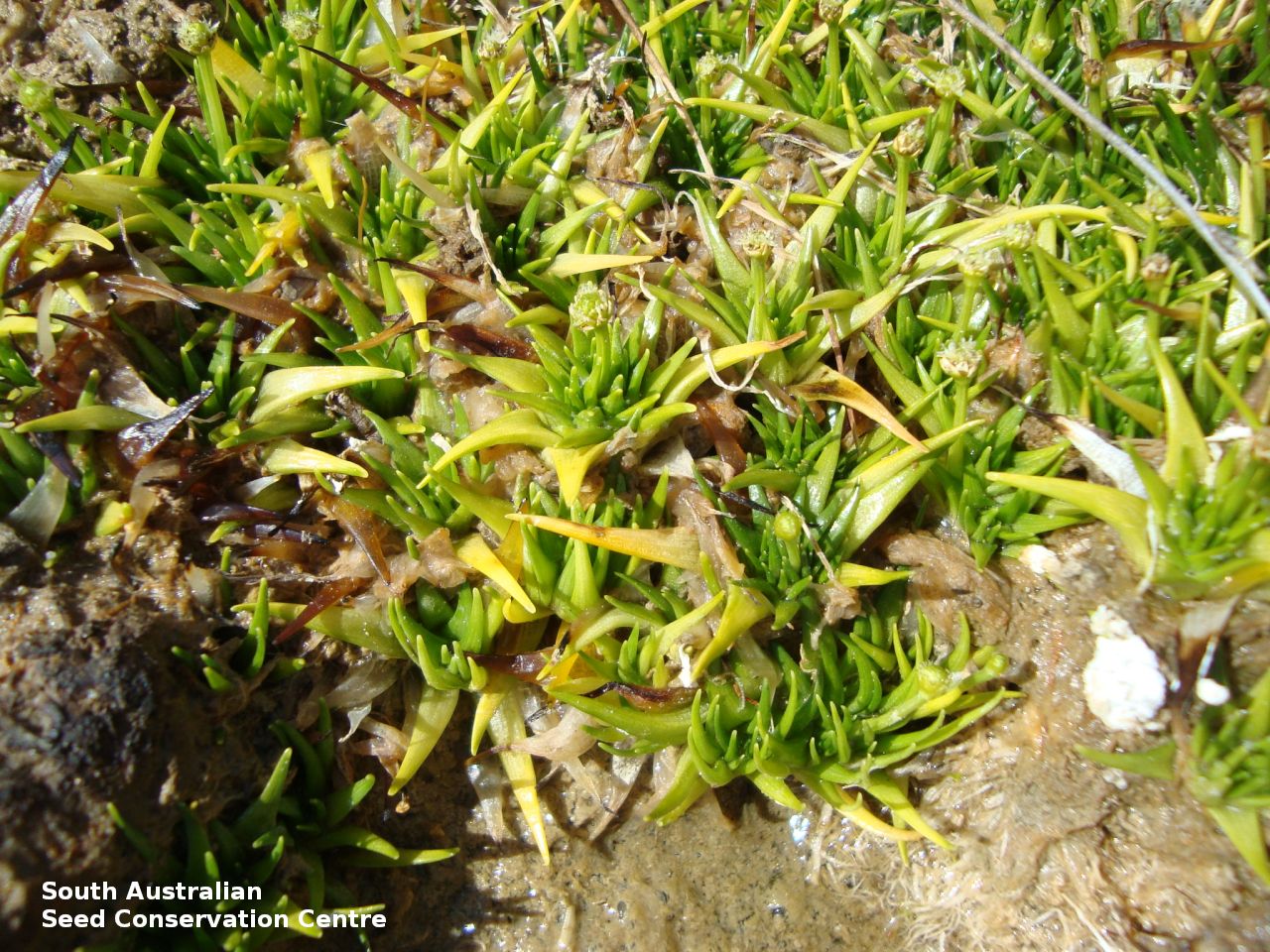
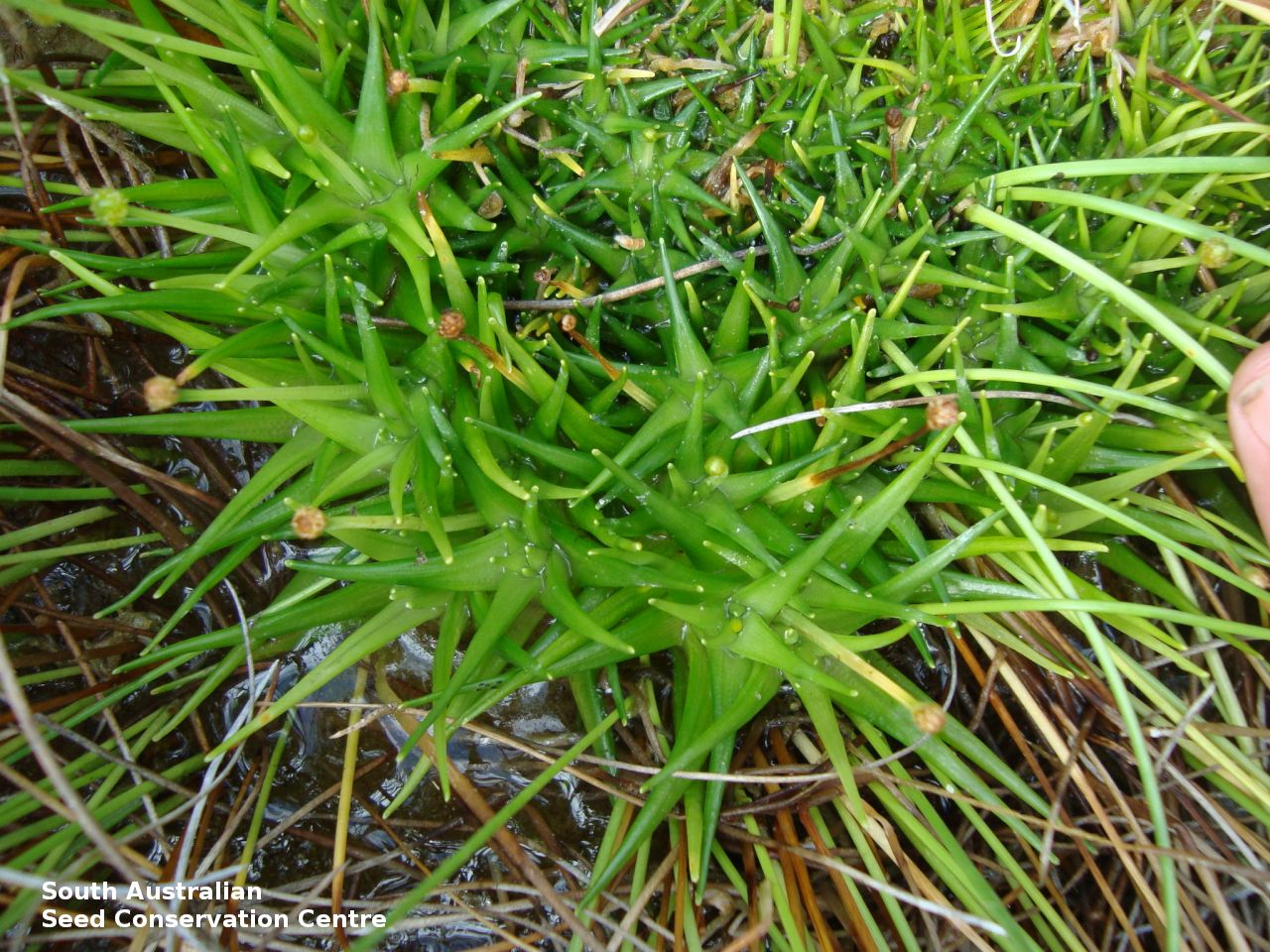
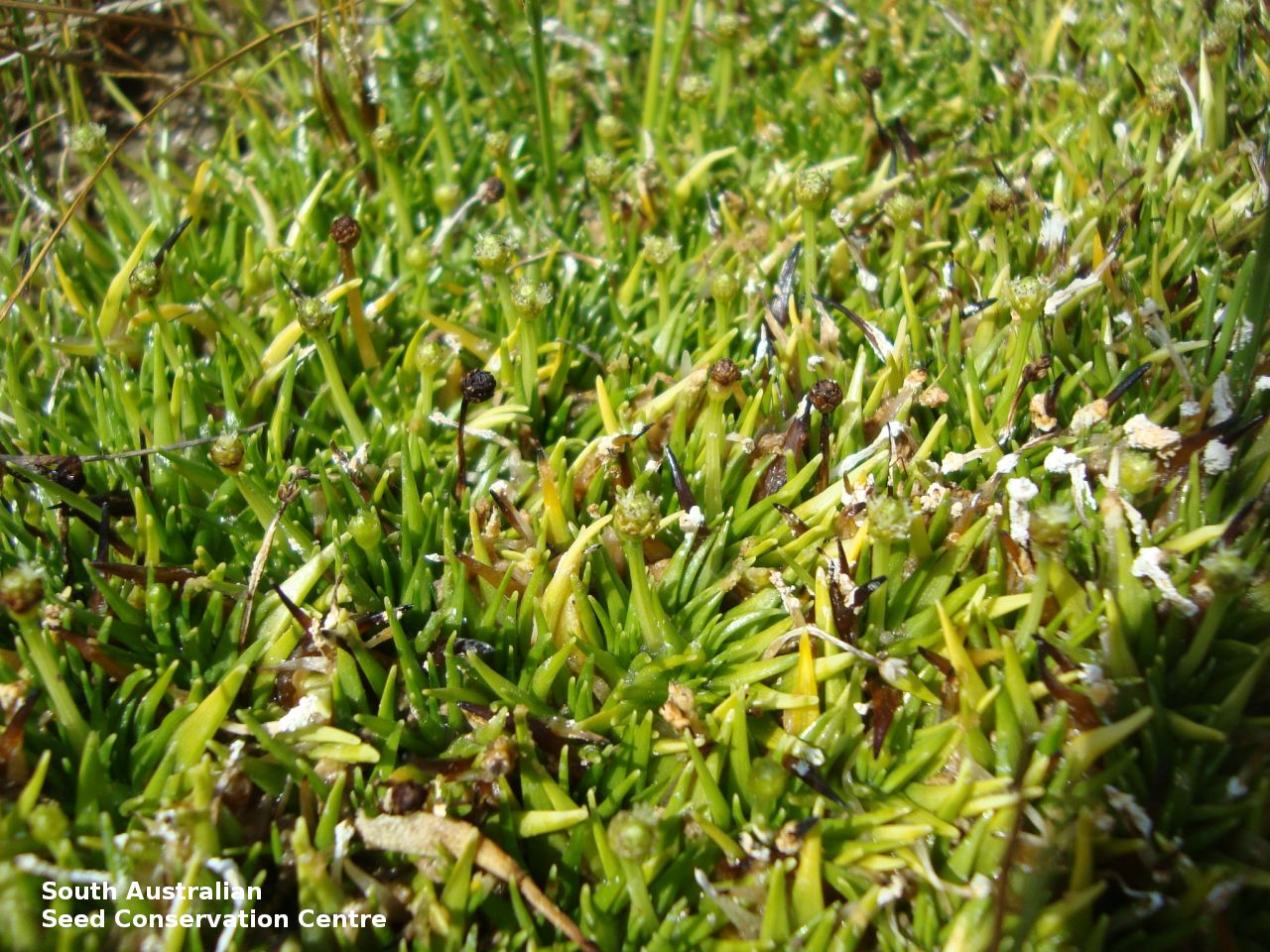
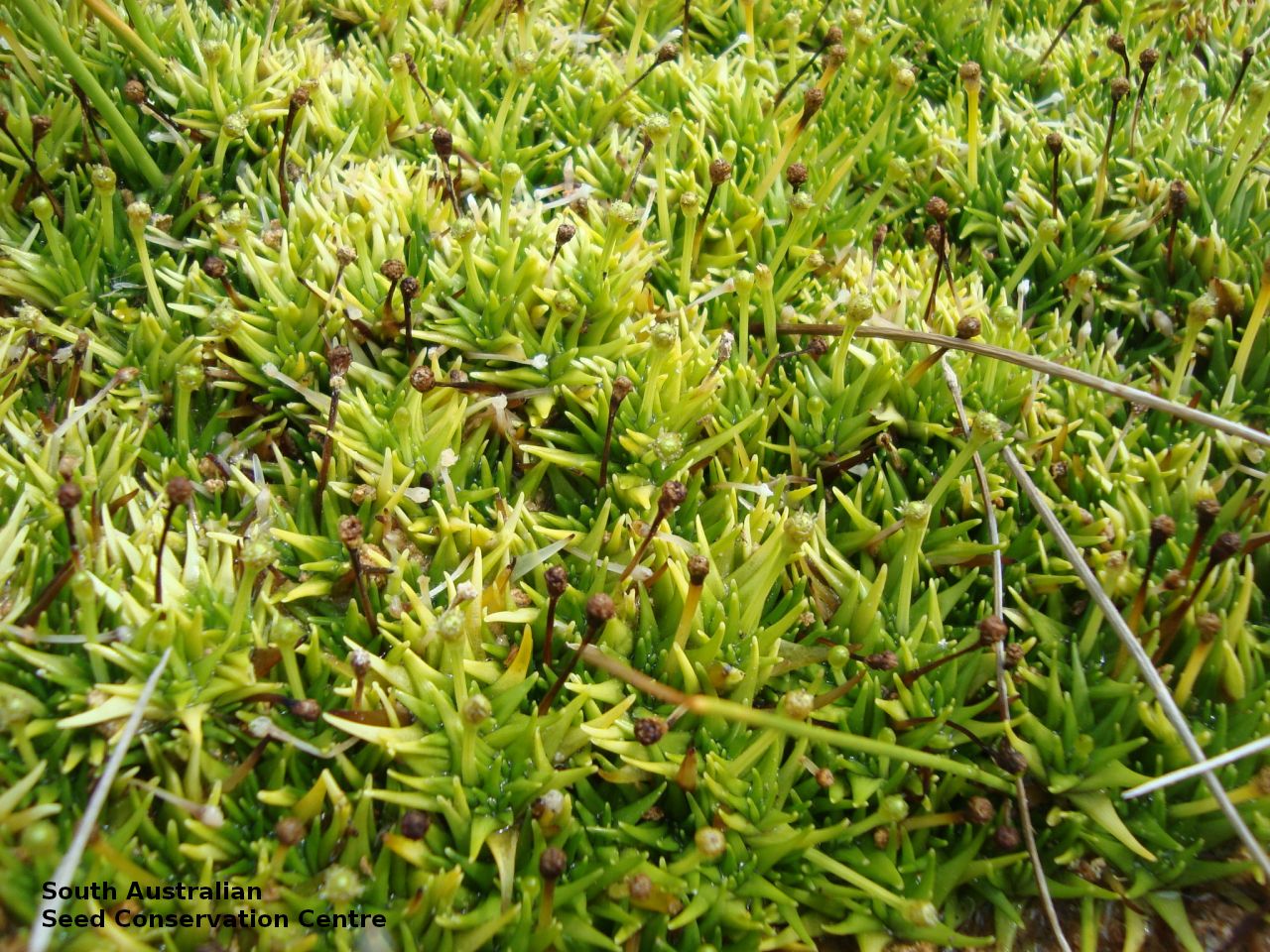
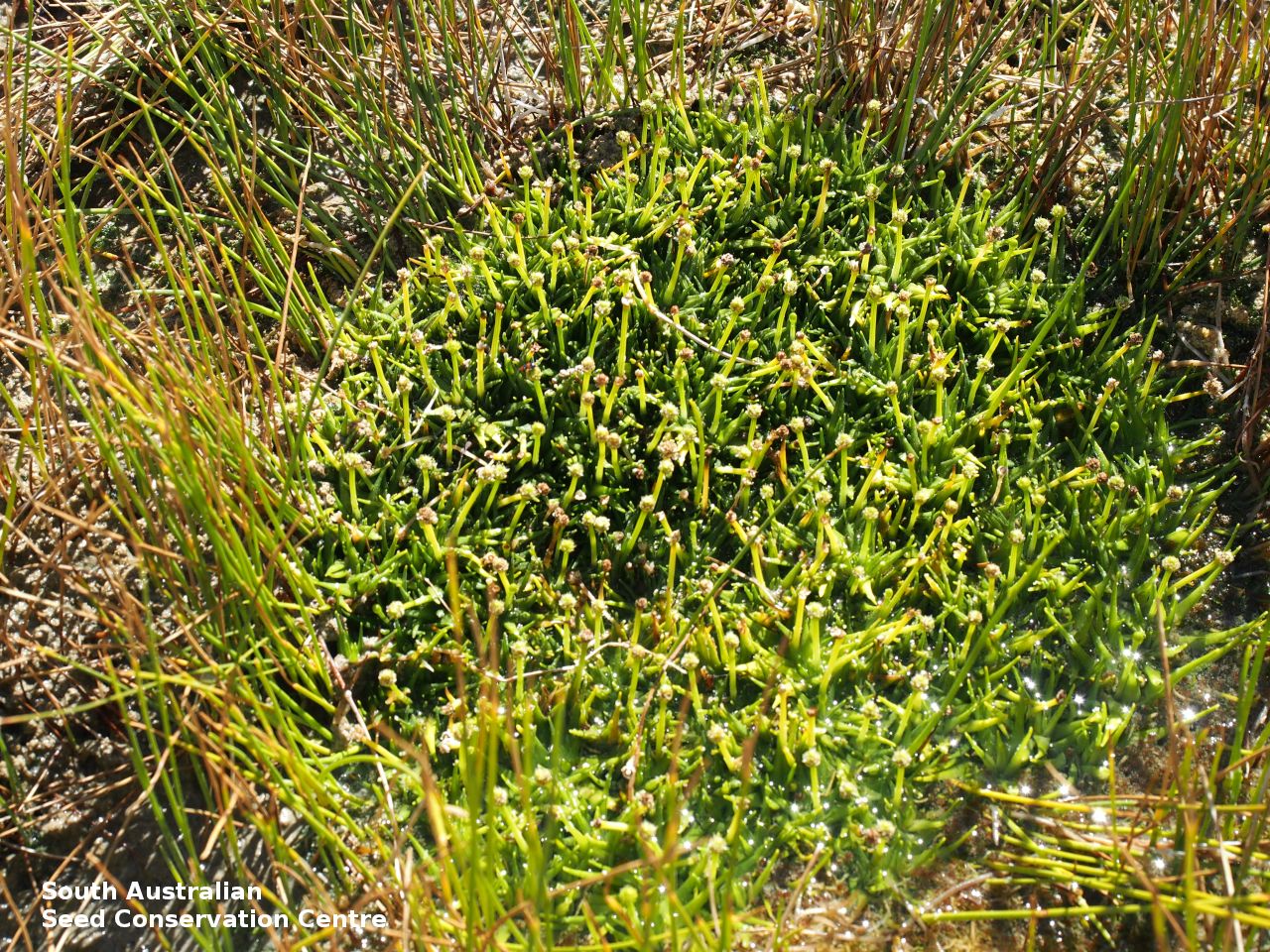
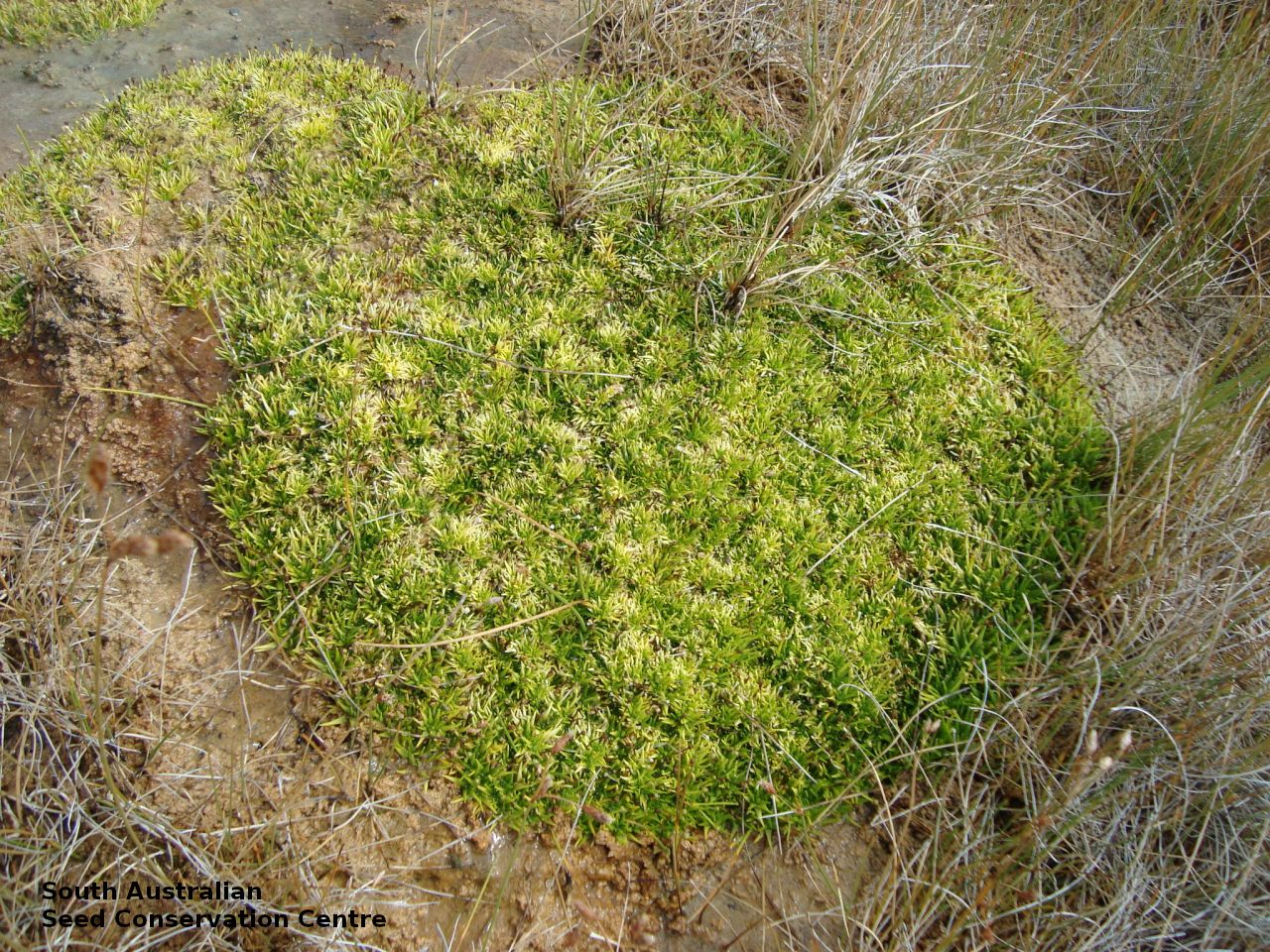
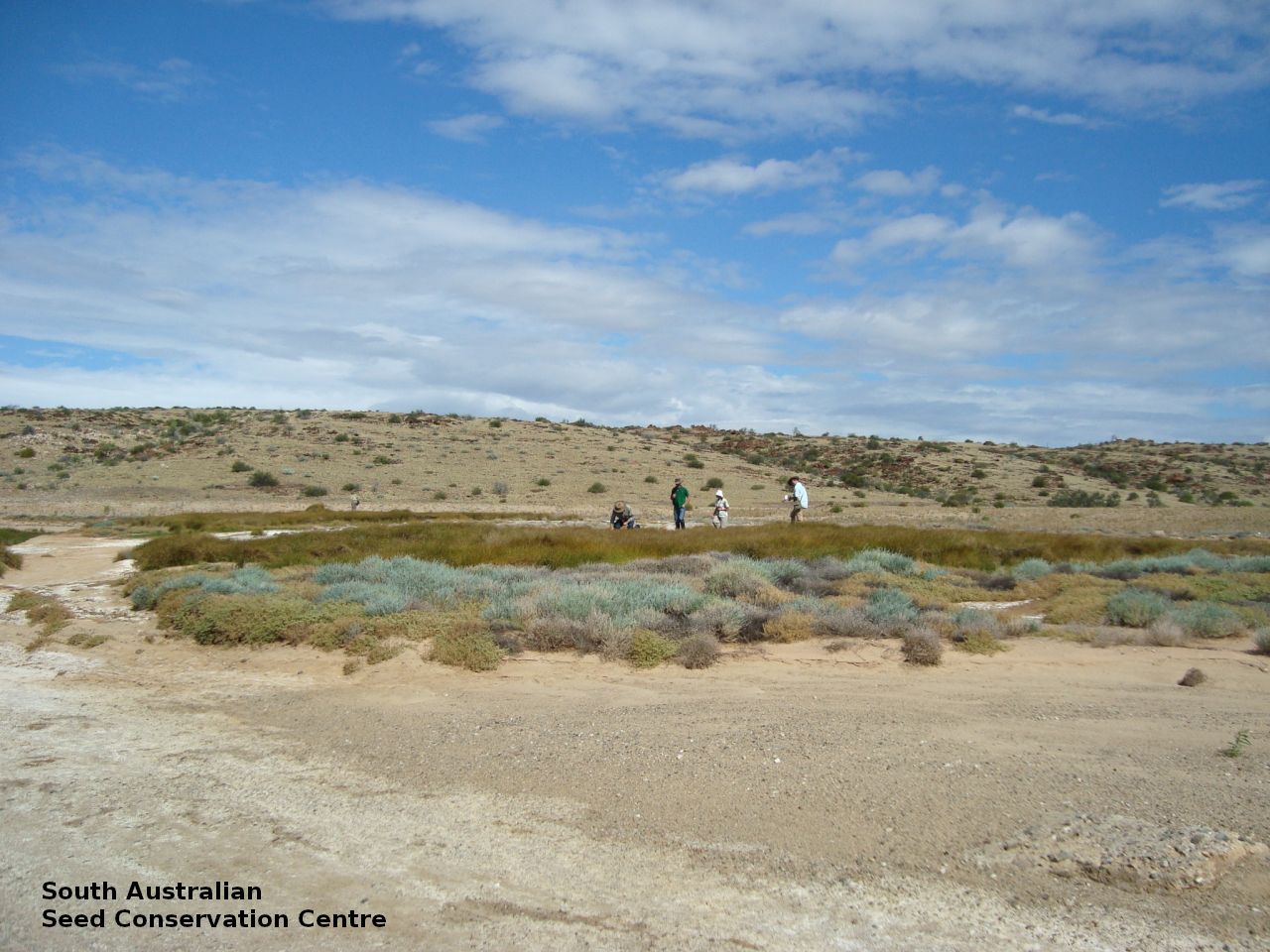
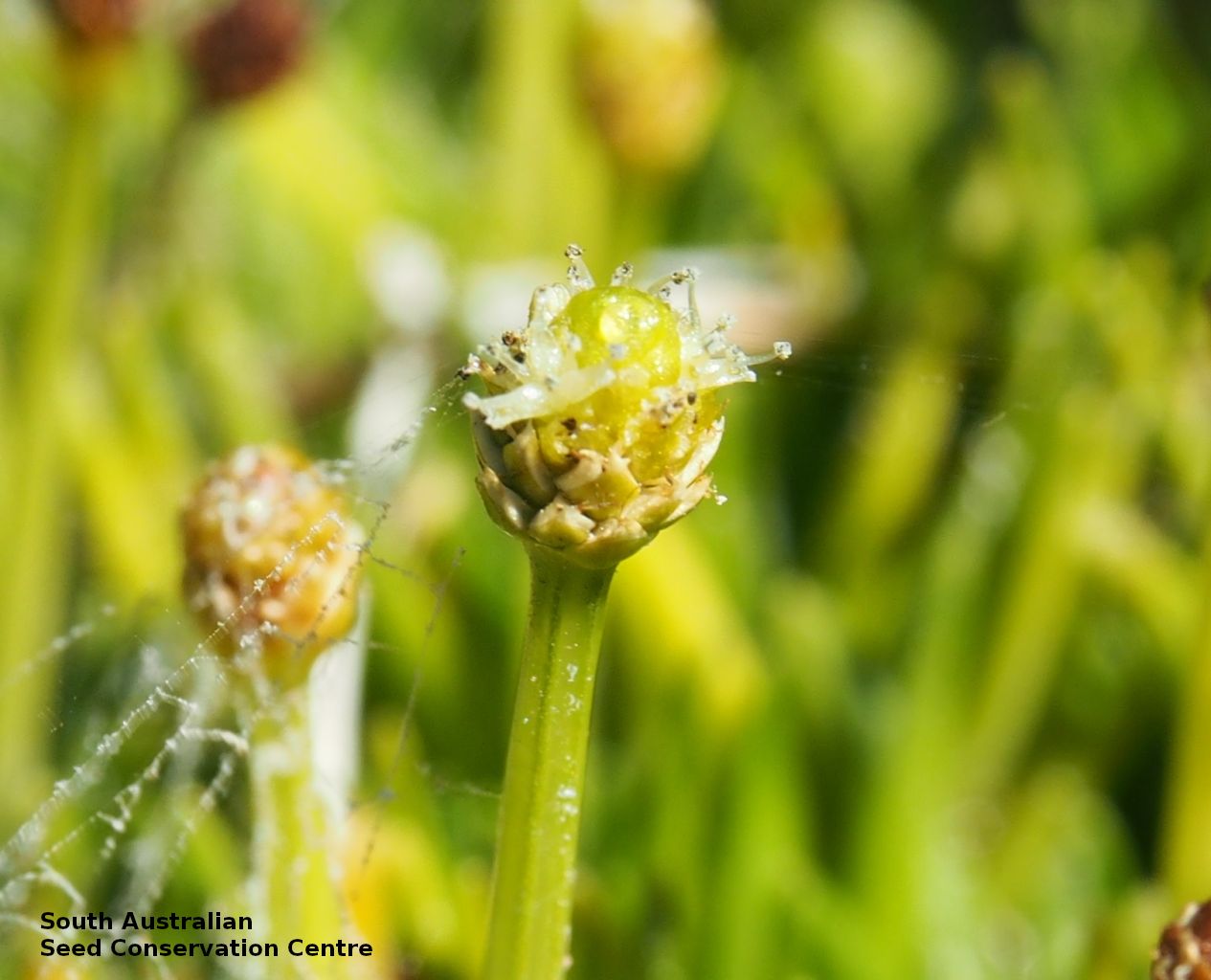
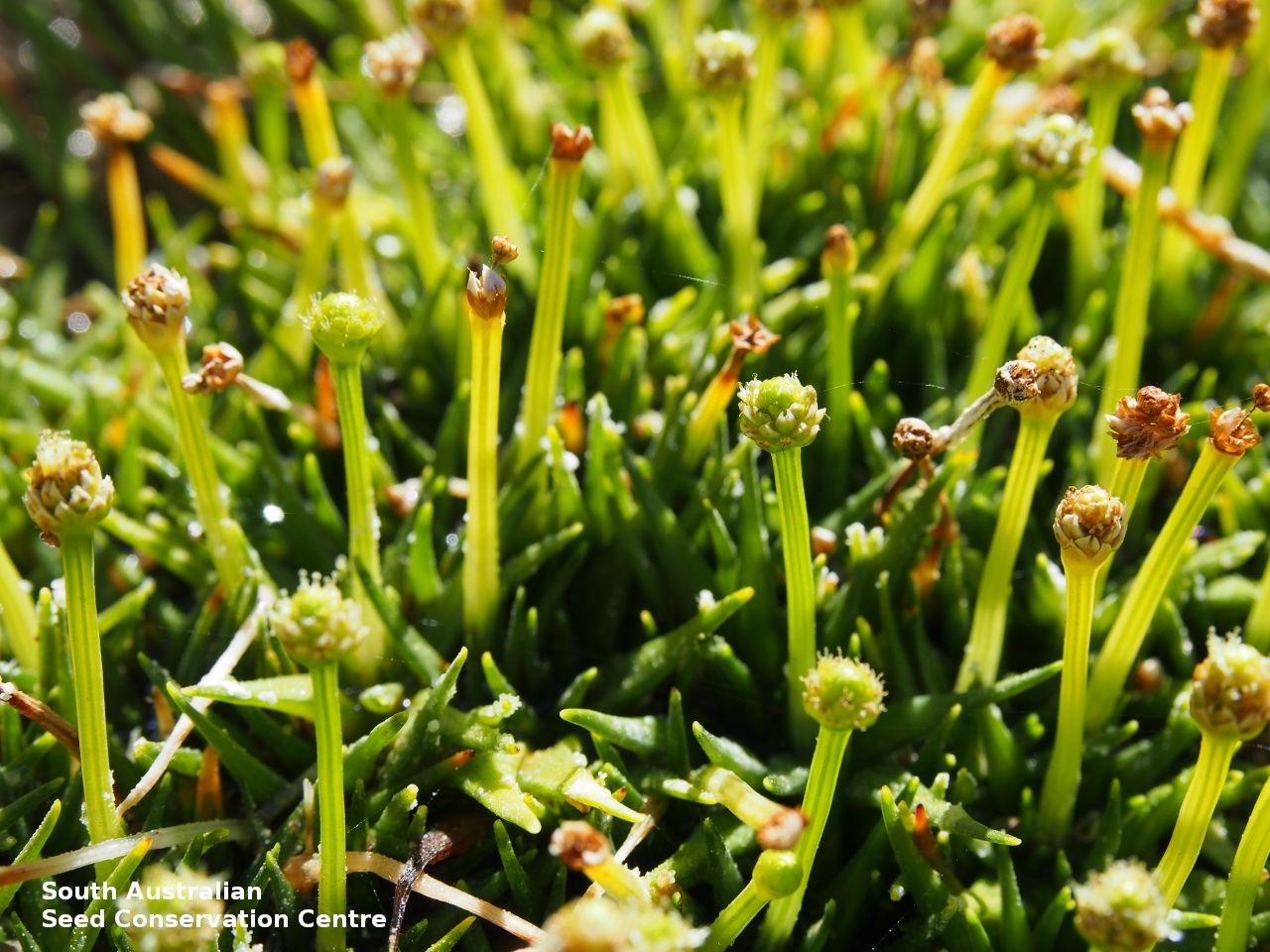
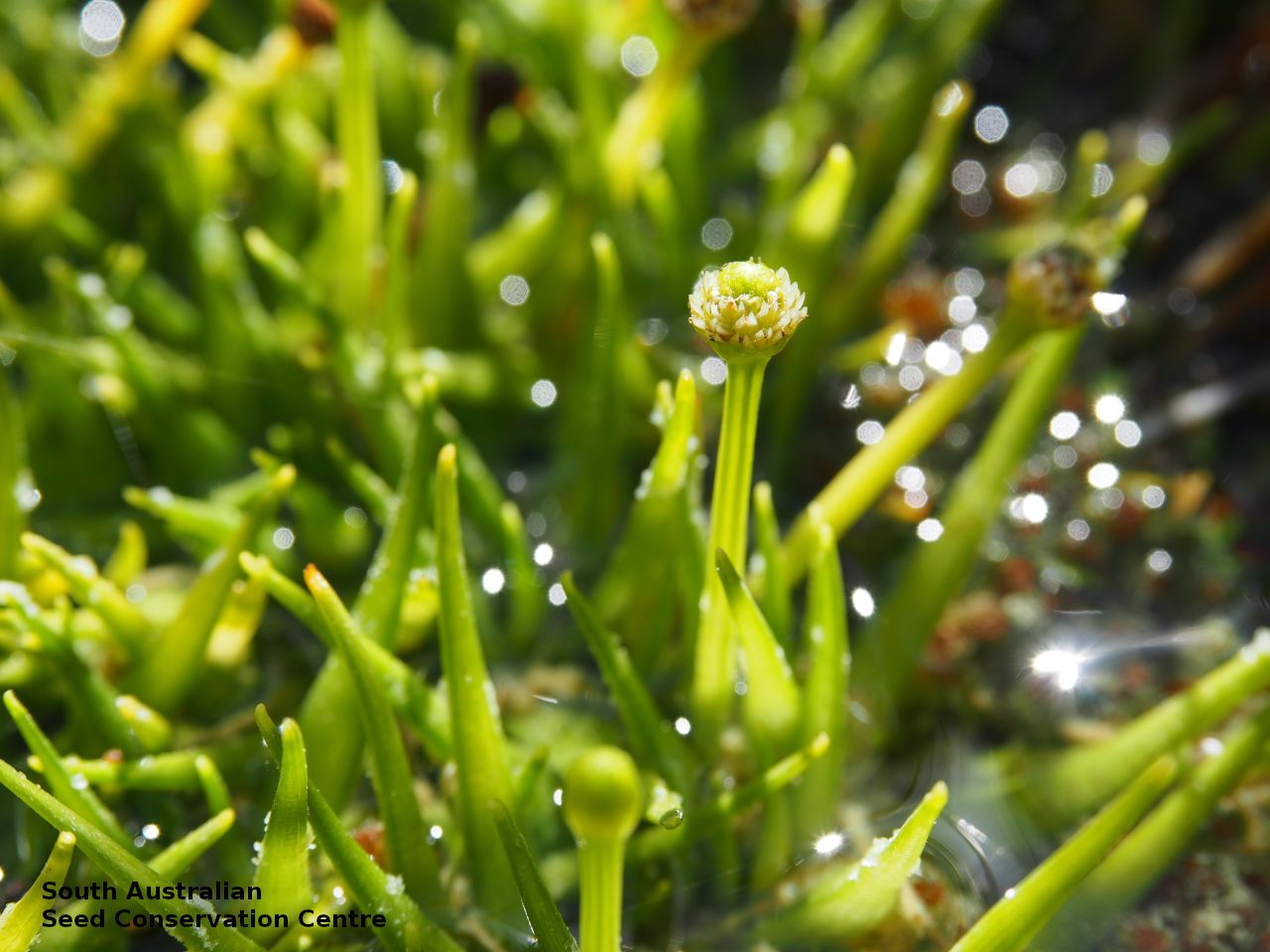
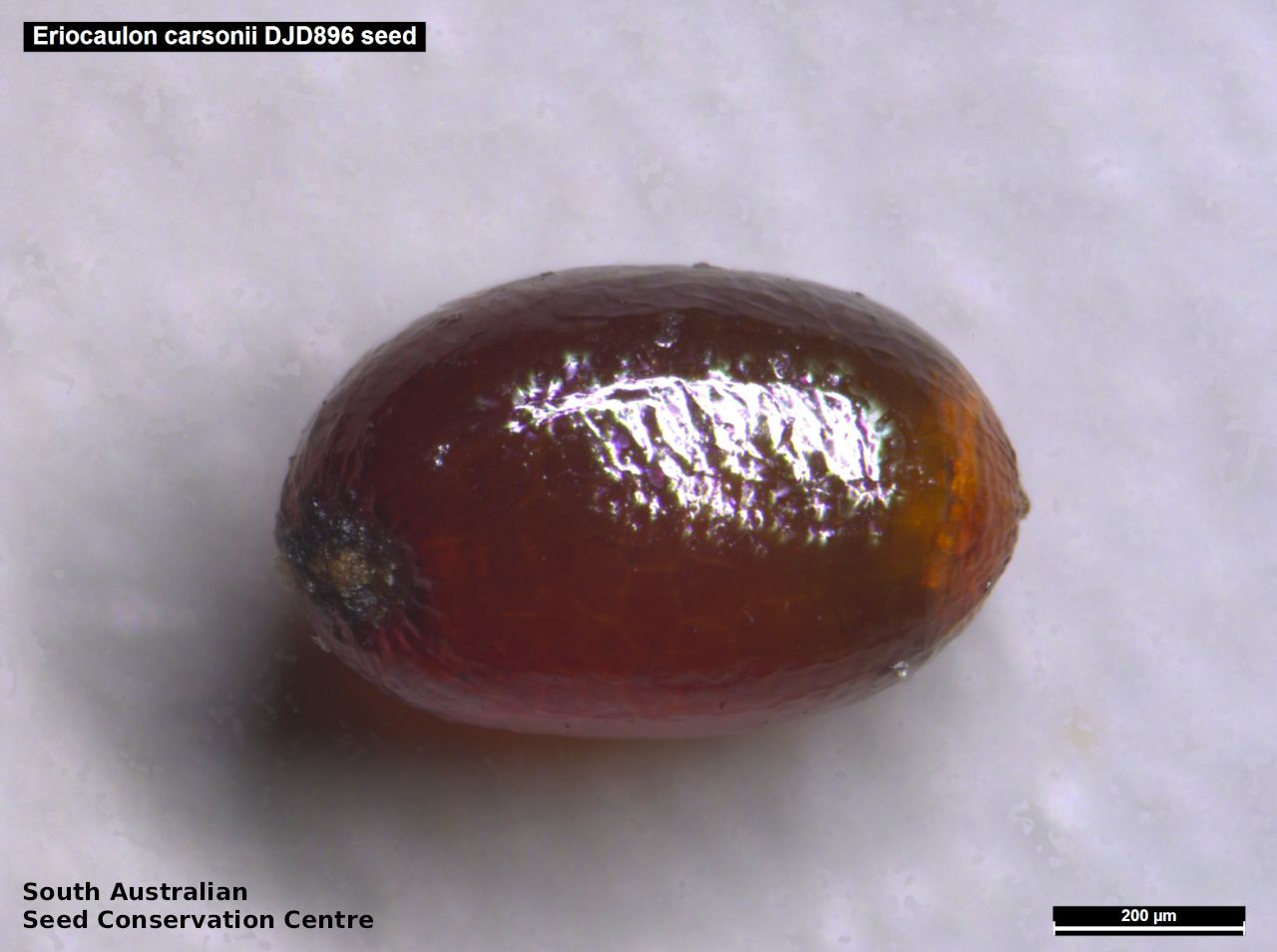
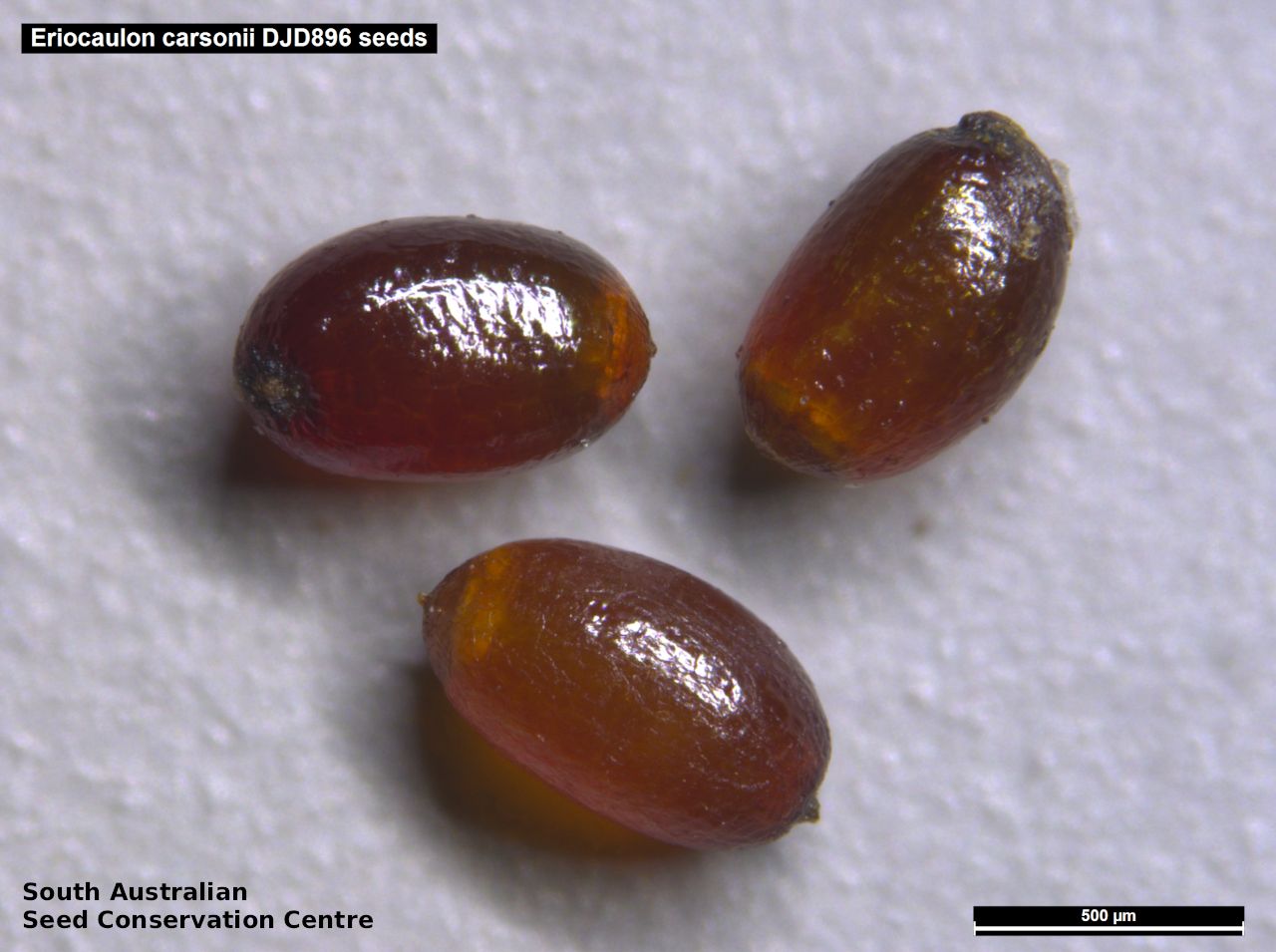



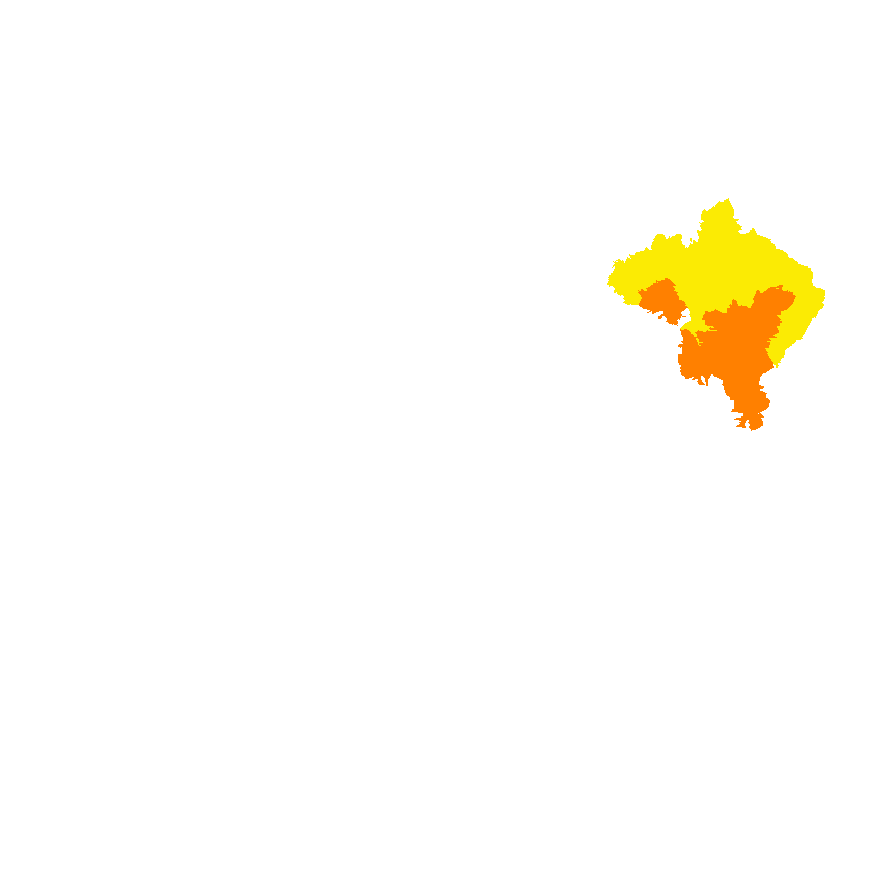
Botanical art
Prior names
Eriocaulon carsonii
Eriocaulon tatei
Eriocaulon submersum
Etymology
Eriocaulon from the Greek 'erion' meaning wool and 'kaulos' meaning stem; alluding to the woolly scapes of some species. Carsonii named after Duncan Carson (1860-1931), a woolbroker and pastoralist and the collector of the type specimen.
Distribution and status
Found around hot-springs in the Lake Eyre region in South Australia. Also found in Queensland and New South Wales. Native. Very rare in South Australia. Very rare in the other states.
Herbarium region: Lake Eyre
NRM region: South Australian Arid Lands
AVH map: SA distribution map (external link)
Plant description
Small mat forming succulent herb to 6 cm tall. Leaf blade with obvious square air sack. Flowers single round ball on a long stalk appearing in winter and spring. Fruits are round fruit heads less than 1cm long, usually turning brown as it matures. Seeds are very small yellow to orange ovoid seeds to 0.8 mm long and 0.5 mm wide, smooth and shiny. Seed embryo type is broad.
Seed collection and propagation
Collect seeds between May and October. Carefully pick the browning fruit heads by hand. These will have mature seeds which are hard and yellow-orange. Place the fruit heads in a tray and leave to dry for a week. Then gently rub the heads by hand. Use a fine sieve to separate the unwanted material. Be carefully which part you discard as the seeds are very small and will probably fall through your sieve. Store the seeds with a desiccant such as dried silica beads or dry rice, in an air tight container in a cool and dry place. Seed viability is usually high.
| Location | No. of seeds (weight grams) | Number of plants | Date collected | Collection number Collection location | Date stored | % Viability | Storage temperature |
|---|---|---|---|---|---|---|---|
| BGA MSB | 2,000 (0.21 g) 1,800 (0.19 g) | 200+ | 1-Oct-2007 | DJD896 Lake Eyre | 19-Sep-2008 | 95% | +5°C, -18°C |
| BGA | 1,300 (0.16 g) | 29-Sep-2008 | TST535 Flinders Ranges | 20-Jul-2009 | 100% | -18°C | |
| BGA | 310 (0.031 g) | 100+ | 3-May-2011 | DCB22 Lake Eyre | 1-Jan-2012 | -18°C |
Number of plants: This is the number of plants from which the seeds were collected.
Collection location: The Herbarium of South Australia's region name.
% Viability: Percentage of filled healthy seeds determined by a cut test or x-ray.